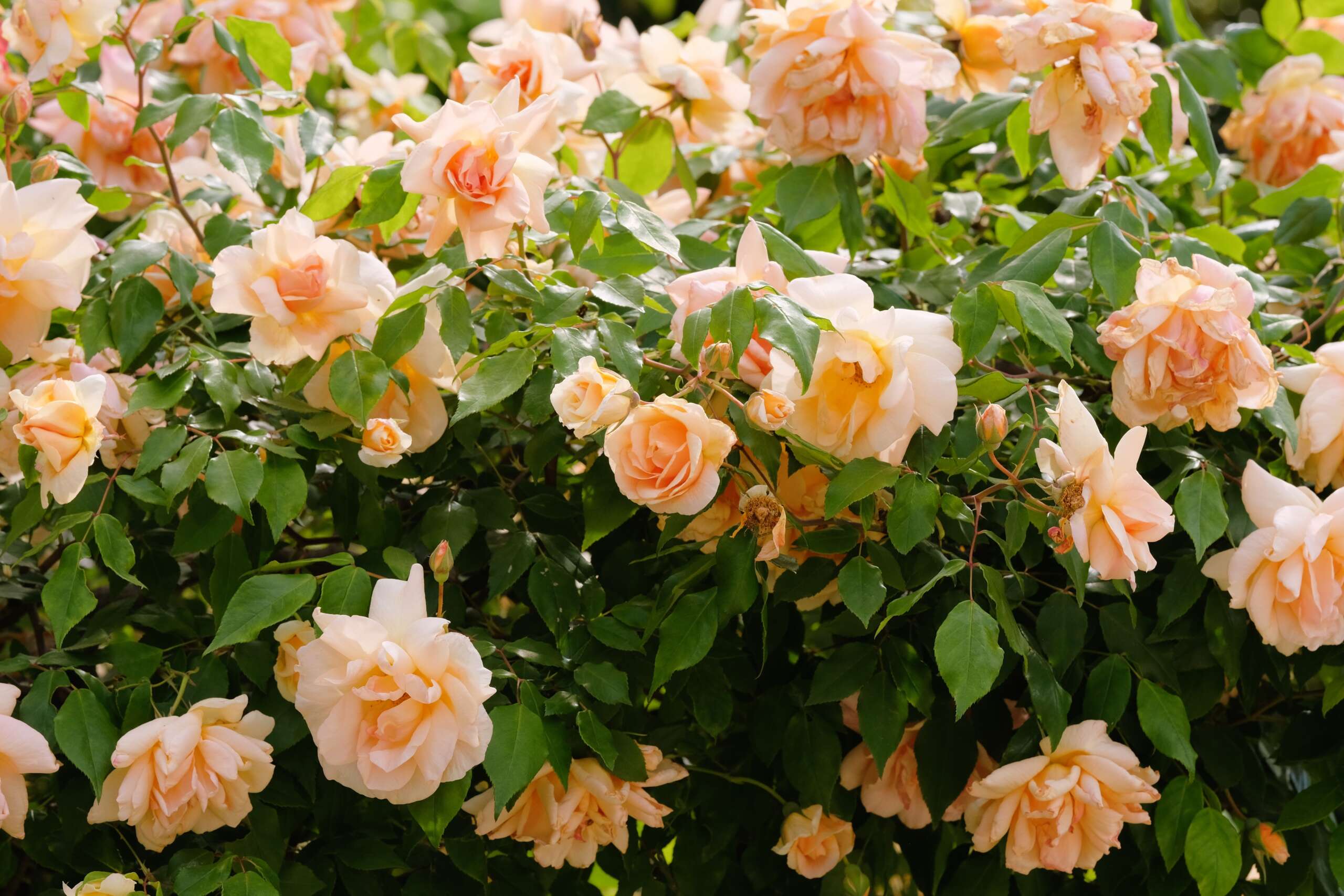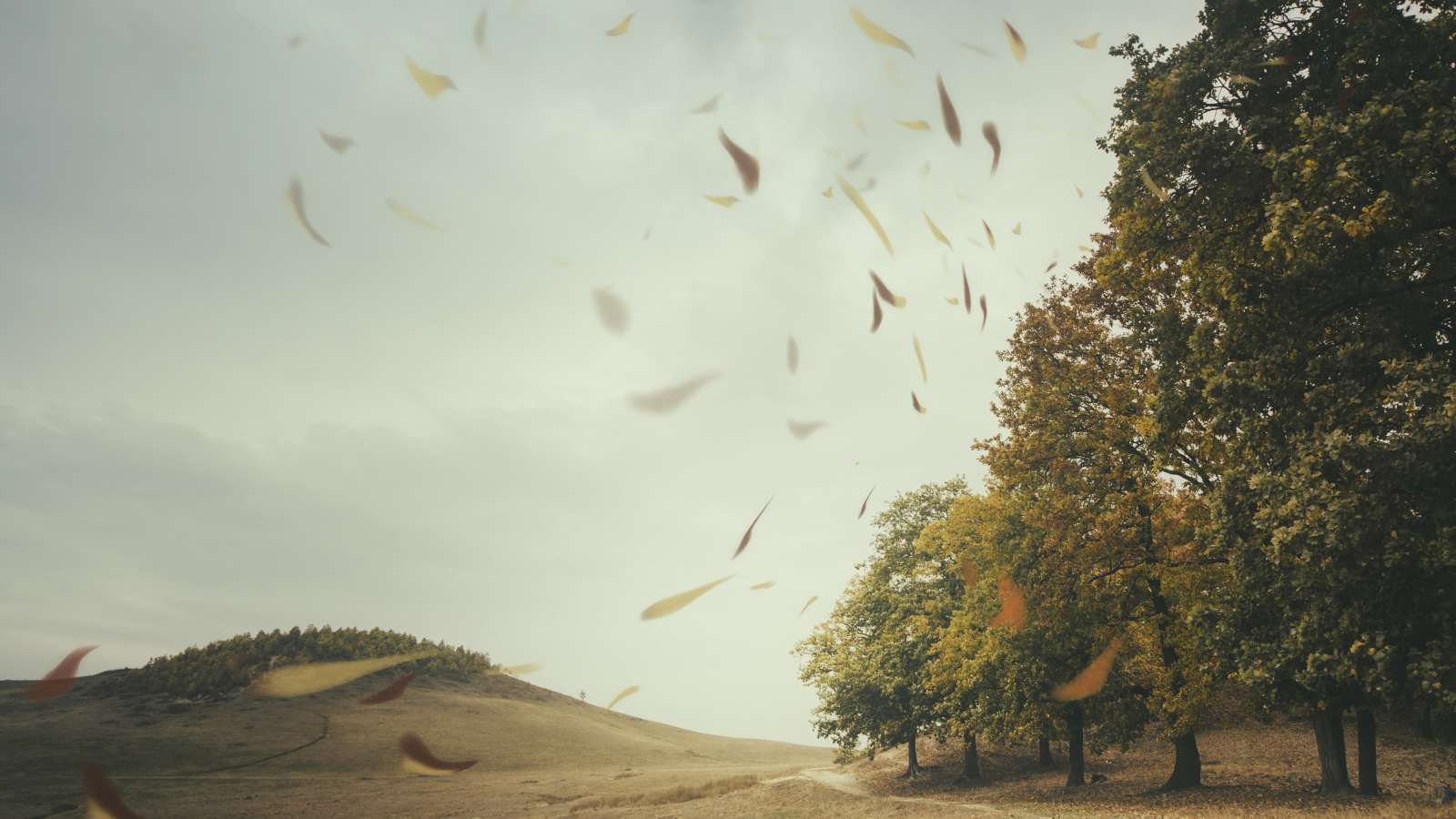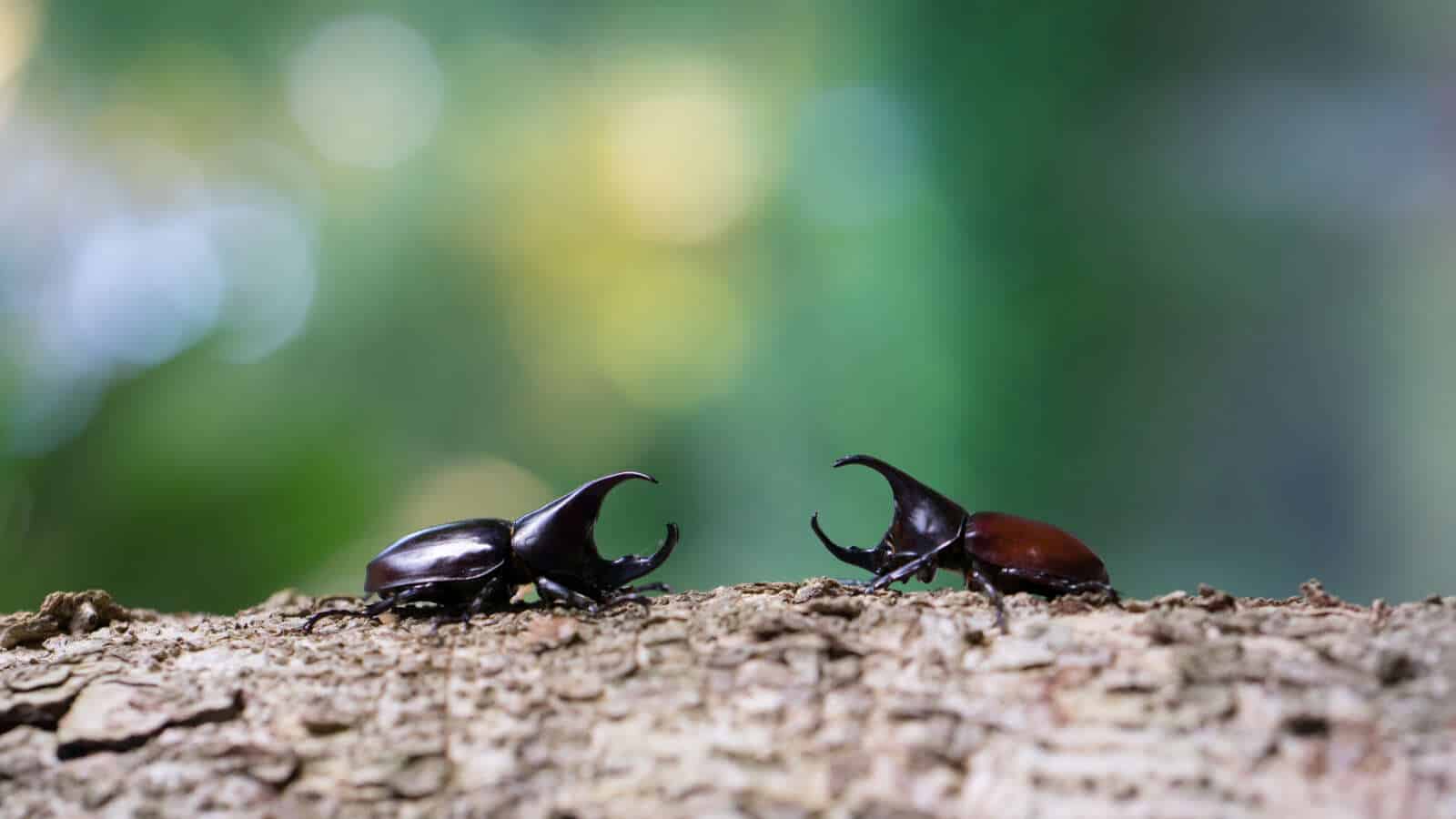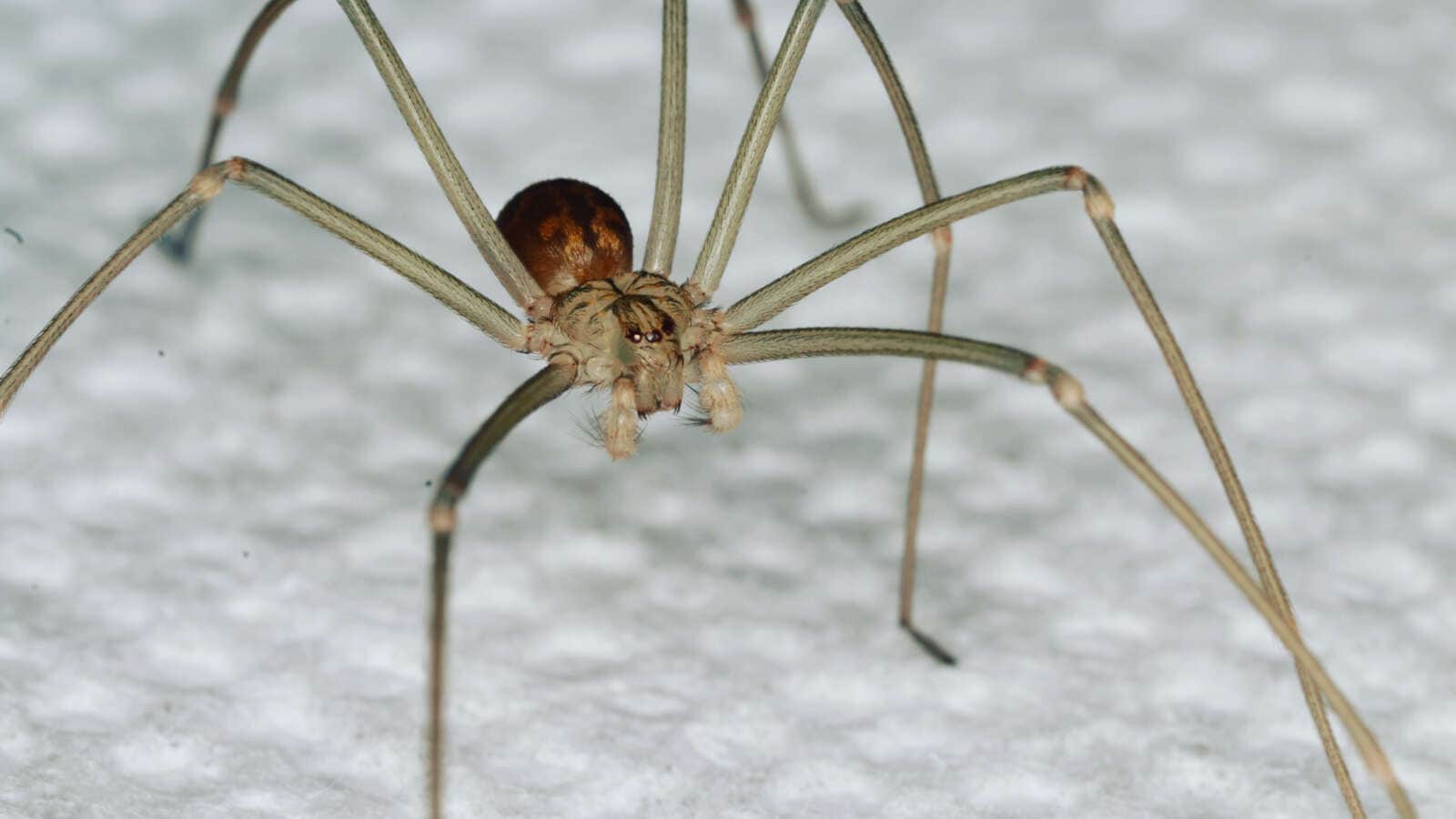5 Rose Pests That Ruin Your Blooms
Summary: Roses are a famous flower, but they are still at risk of pest invasions. This blog explains the lives and eating habits of 5 rose pests, all of which can ruin a rose garden. The featured pests are: rose aphids, rose slugs, sawflies, Japanese beetles, and thrips. Pointe Pest Control eliminates rose pests and other garden pests, as well as any other pests that could invade the home.
_________________________________________________________________________________________
Roses are one of the most famous flowers ever. Between their affiliation with Valentine’s Day and their constant presence in the floral department of every grocery store, roses are at the forefront of our flower conversations. These beautiful flowers have thorns to defend themselves, but even these spikes aren’t enough to fend off every pest. Let’s learn about five of the most common rose pests and why their presence causes such problems for these flourishing flowers.
Rose Aphids
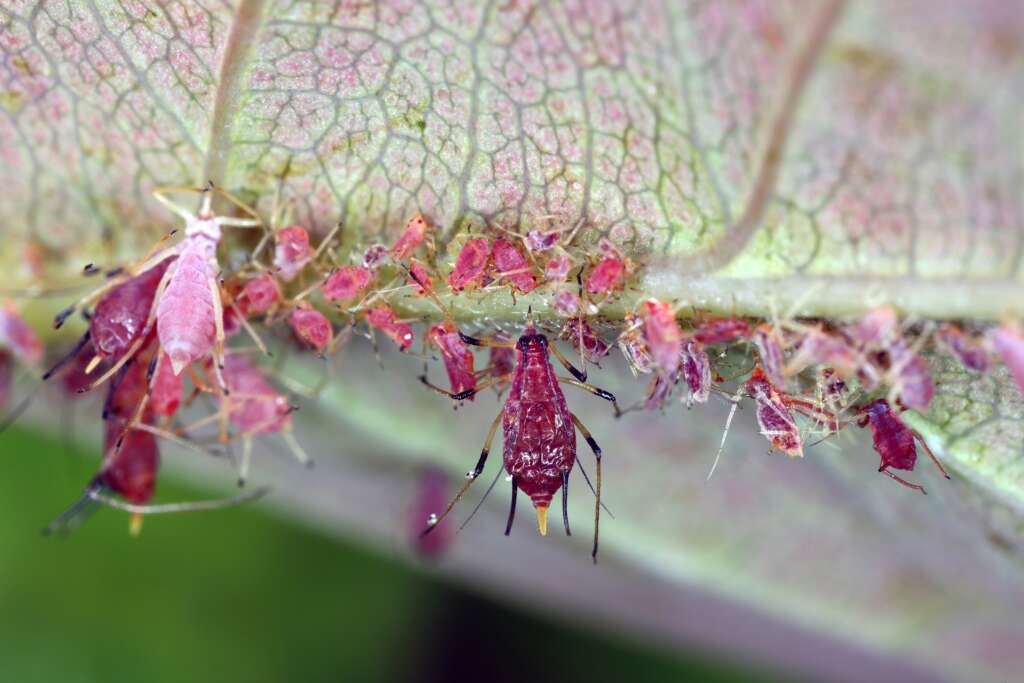
Signs of Infestation: distorted leaves, sooty mold on leaves, fewer blooms than usual
Aphids are a problem for just about every garden plant, but rose aphids specifically target — you guessed it — roses. These pests are about 1/8 of an inch long, green or pink-colored, and soft. They’re only seen in clusters because aphids reproduce so quickly that they are constantly surrounded by their own. Since they prefer new buds and leaves to full ones, rose aphids can ruin an entire plant by attacking it at its most vulnerable.
The main reason why rose aphids are such an issue is because of how they feed on roses. Their sharp mouthparts pierce the plant and drink the vital sap, draining the rose bush of life the longer that the aphids are left alone. Rose aphids also secrete honeydew, a sticky substance, as they feed. The honeydew grows sooty mold and attracts ants, so aphids are not always isolated in their invasions.
Rose Slugs
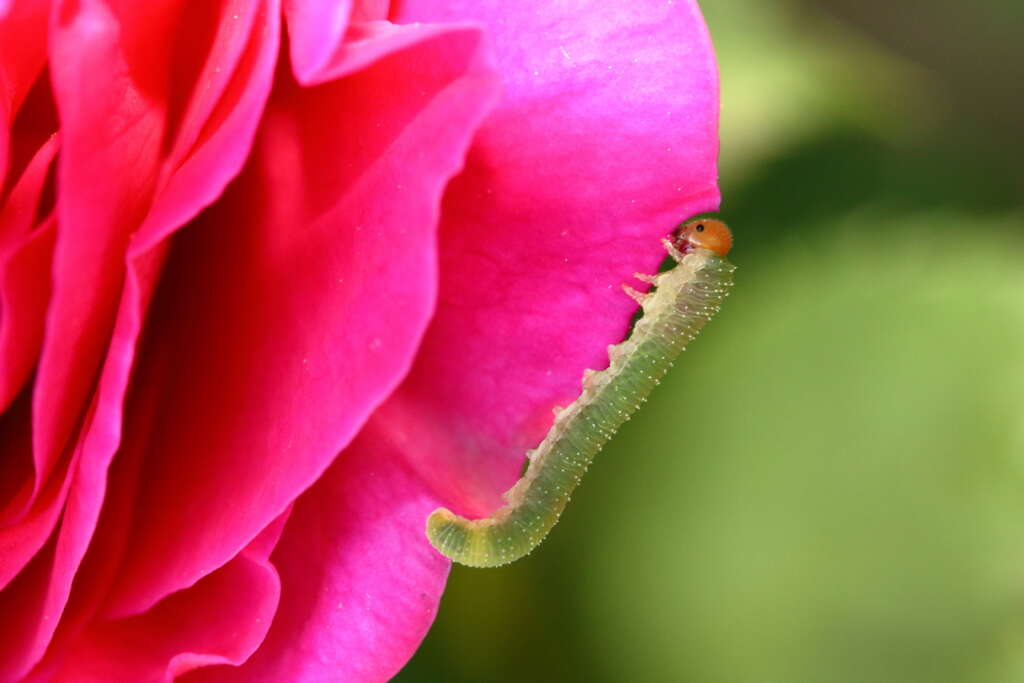
Signs of Infestation: papery holes in leaves, weak roses, surface damage on leaves, thin splotches
These aren’t the slugs that leave a gross trail of goo throughout your garden. Rose slugs are yellowish-green worms that are 3/4 of an inch long and are active at night. They are the larvae of rose sawflies, who lay their eggs on the undersides of leaves. Once the eggs hatch, the rose slugs start devouring the roses through spring and summer.
Rose slugs are interesting in that they don’t eat through the leaves. Rather, they so much of the leaf’s surface that it has no chance of coming back. The rose slugs steadily gnaw on the leaf and leave behind a shell of a leaf in their wake. Rose slugs are protected from other pests because of their slimy covering. If you think you might have rose slugs, check the undersides of the leaves — especially if they’re damaged.
Sawflies
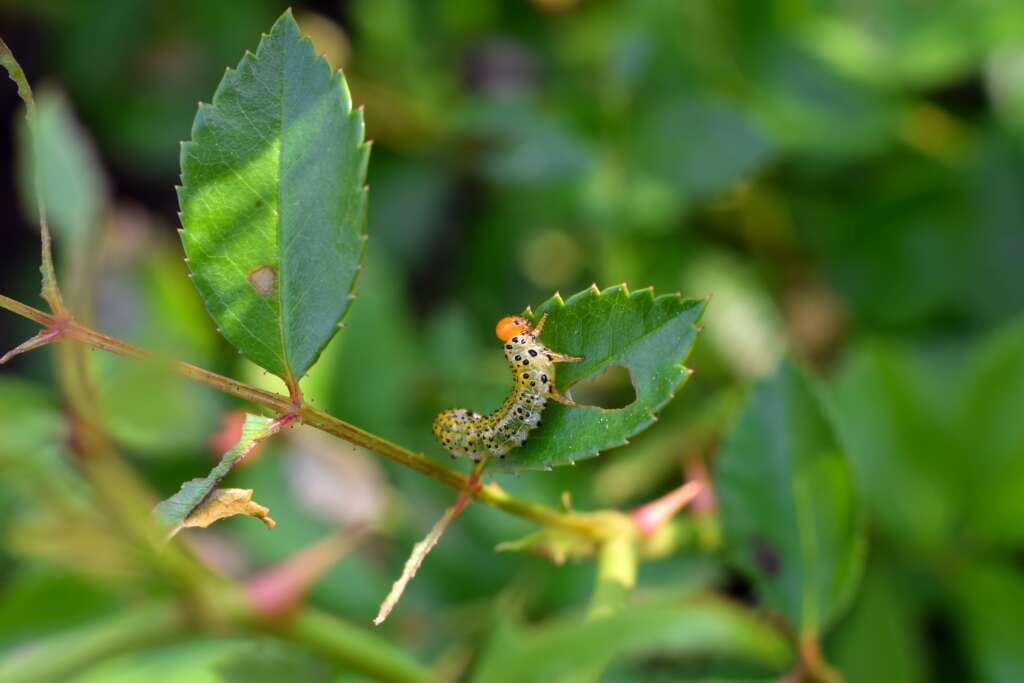
Signs of Infestation: split stems, rolled leaves, skeletonized leaves
Adult sawflies don’t do much with roses, but their larvae are some of the most destructive rose pests out there. The adults place their eggs in the rose stems, then the hatched larvae break through the stems to get to the leaves. Since they’re nocturnal and eat quickly, sawfly larvae can ruin a rose bush before you know it. They’re grayish-green in color and measure up to 1 inch long, so sawfly larvae often blend in with their surroundings.
Most of the damage starts in May because the warm weather gives the pests more energy. The sawfly larvae feed on the surface of the leaves, and are usually found in between the veins. The leaves that the sawflies eat are ruined for the rest of the season, so it’s important to eliminate the pests as soon as possible. Younger leaves are more at risk than established ones.
Japanese Beetles
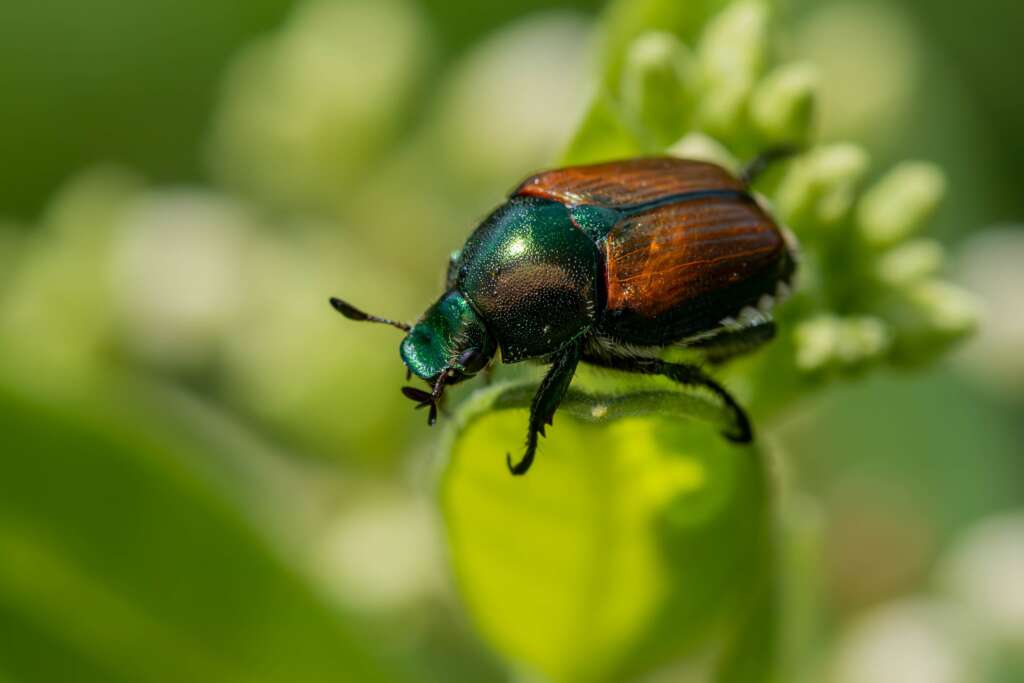
Signs of Infestation: skeletonized leaves, fewer buds and blooms, big holes in leaves
These beetles are the strangely shiny ones you might see in your garden every summer. Japanese beetles have polished green and copper wings and are about 1/2 an inch long. Their eggs are placed in the grass, where the hungry larvae ruin the roots by feeding on them as the young beetles grow. When they emerge from the soil in early summer, Japanese beetles are ready to devour even more plants.
You will often see Japanese beetles feeding on rose bushes in the daytime, when the sun warms the garden. These beetles love roses, but they happily eat from 300 types of plants. Japanese beetles will even eat young flowers whole! Individual beetles can find their own food sources, but they won’t be alone for long. They release pheromones (scent chemicals) that invite other Japanese beetles to feed from the same plant.
Thrips
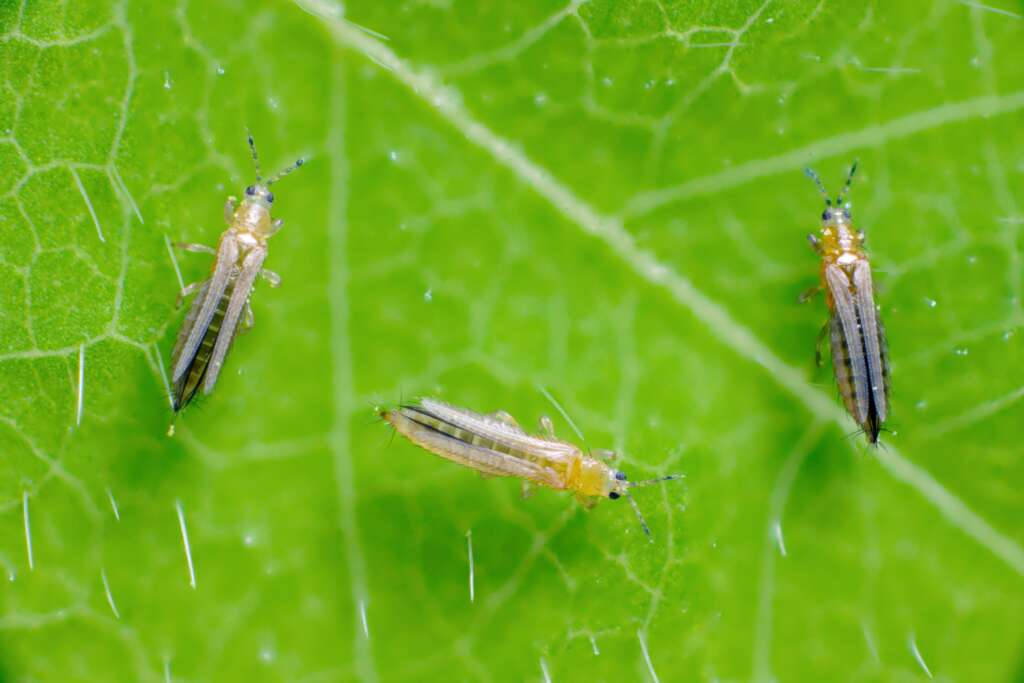
Signs of Infestation: deformed buds, flecks and brown streaks on leaves, distorted leaves
Thrips are most active in early to mid-summer, so the good news is that their activity is already starting to wane this year. But the destruction they cause at their peak is enough to worry anyone who grows roses in their garden. These rose pests are skinny and yellow-brown in color, and they’re so small that it requires a closer inspection to see them on a rose bush.
Thrips prefer buds and light-colored blooms, which makes it a little easier to find them on the fair flowers. They stay at the base of the flower while they feed on the plant’s vital fluids. They also eat leaves and petals, but thrips usually hide in closed buds for additional protection. These pests will move on to another new bloom once they’re done with their current meal, so it’s best to remove any thrip-infested flowers ASAP.
Protect Your Beautiful Blooms With Pointe!
Gardens add a much-appreciated touch of personality to any backyard, which is why it’s important to protect them from pesky pests. At Pointe Pest Control, our licensed technicians are dedicated to protecting local homes and businesses from all kinds of pests. We tackle pest problems through a combination of thorough inspections, targeted treatments, and customized plans. Your complete satisfaction with our services is always our top priority, and we look forward to keeping you pest-free all year long. Contact us today for a free quote on the most dependable pest control services around!
Citations
Elgar, C. (2020, July 1). Roses and the insects of summer. American Rose Society. Available at https://www.rose.org/single-post/2020/07/01/roses-and-the-insects-of-summer (Accessed on July 24, 2024).
Hansen, J. (n.d.). Protecting roses from aphids and other common pests. GardenTech. Available at https://www.gardentech.com/blog/garden-and-lawn-protection/protecting-roses-from-aphids-and-other-common-pests (Accessed on July 24, 2024).
Rose insect pests. (n.d.). Kansas City Rose Society. Retrieved July 24, 2024, from https://www.kansascityrosesociety.org/rose-insect-pests
Rose problems. (n.d.). Missouri Botanical Garden. Retrieved July 24, 2024, from https://www.missouribotanicalgarden.org/gardens-gardening/your-garden/help-for-the-home-gardener/advice-tips-resources/visual-guides/rose-problems
Scott, J.M. & Williamson, J. (Dr.). (2021, July 30). Rose insects & related pests. Clemson Cooperative Extension: Home & Garden Information Center. Available at https://hgic.clemson.edu/factsheet/rose-insects-related-pests/ (Accessed on July 24, 2024).
Swainston, D. (n.d.). 5 common rose pests — expert tips for how to spot and deal with the problems. Homes & Gardens. Available at https://www.homesandgardens.com/gardens/rose-pests (Accessed on July 24, 2024).


